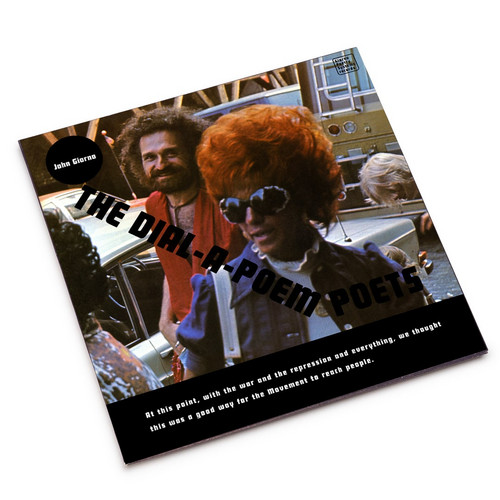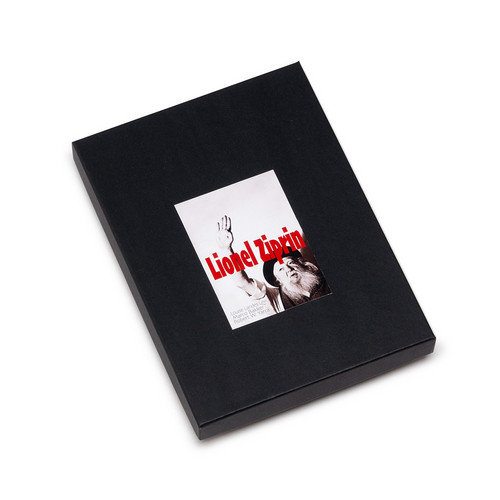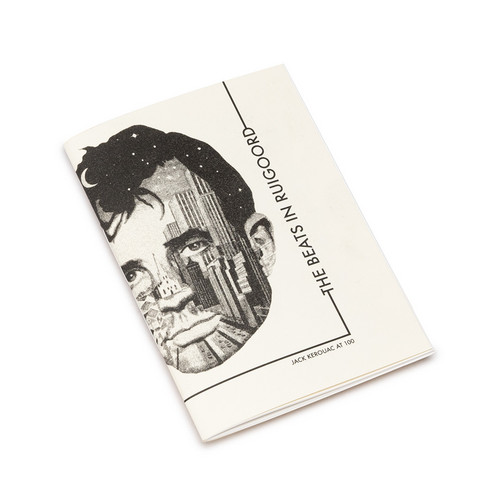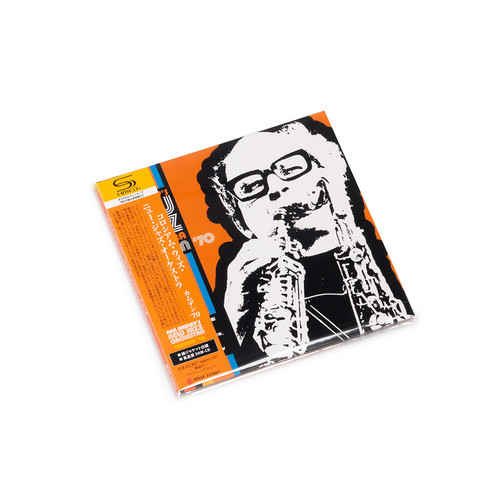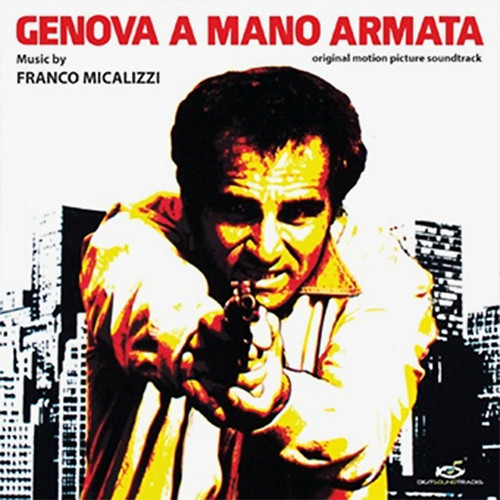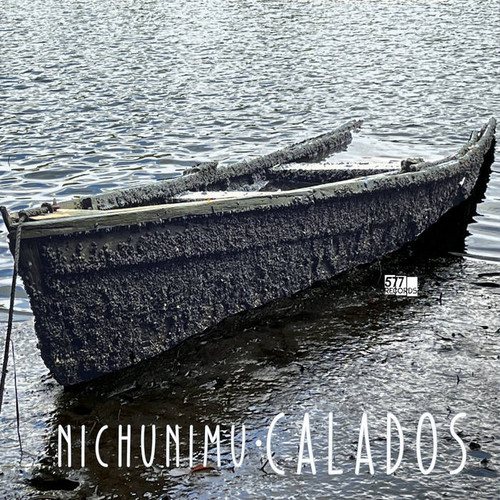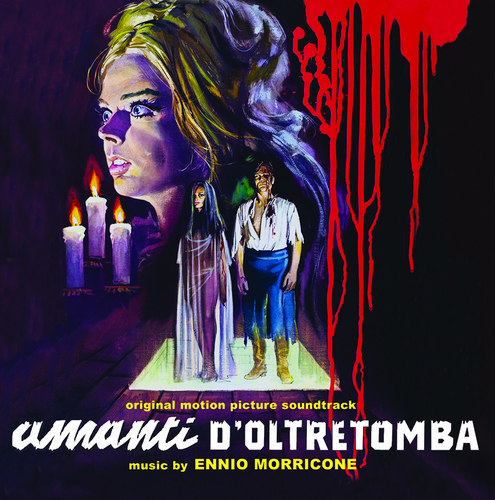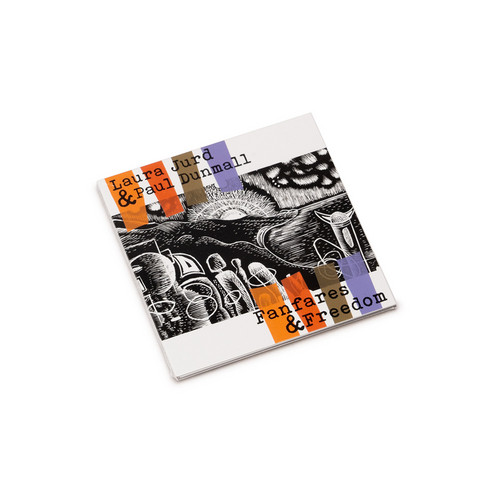New Arrivals
Smack My Crack
** Original copies of this rarity. Factory sealed. Few copies available ** A legendary compilation with contributing musical artists include William S. Burroughs, Tom Waits, Butthole Surfers, Chris Stein, Einsturzende Neubauten, Diamanda Galas, Nick Cave, Swans, John Giorno Band, and Chad & Sudan. Cover art by Gary Panter. "This is a crazy compilation of varying degrees of outsider musicians and poets. It’s a polarizing collection of names – you’re either into Swans or you’re not. You either get…
Like a Girl, I Want You to Keep Coming
** Original copies of this rarity. Factory sealed. Few copies available ** “Like A Girl, I Want You To Keep Coming” (this was a feminist-approved project/title just in case anyone will be scandalized) came at the tail end of label’s existence and is more music-focused. It features some big names in the tracklist including New Order (doing Velvet Underground cover), Debbie Harry, omnipresent David Byrne, Live Skull, Henry Rollins and William Burroughs + Karen Finley on the literary side of thing…
The Dial-A-Poem Poets
** Original copies of this rarity. Few copies available ** The first of several releases documenting John Giorno’s dial-a-poem project. The album was released at the height of protest against the Vietnam war and of confrontation between the US establishment and radical domestic organisations such as the Yippies and the Black Panthers. Running along the bottom of the front cover is the message: “At this point, with the war and the repression and everything, we thought this was a good way for the …
Strange Strings
CD edition, remastered with Bonus Tracks, liner notes by Irwin Chusid, and an expanded essay by David Toop. Packed in tip-on Stoughton gatefold jacket, and includes a printed insert card of the original cover art. Fans of Sun Ra's Space Bop and genre-bending jazz were in for a shock with Strange Strings. Even in the eclectic and sometimes baffling Sun Ra catalog, Strange Strings, first issued in 1967, is an outlier. Is it music, or just noise? Or noise as music? John Cage could not be reached fo…
The Lionel Ziprin Box (Book + Tape + Postcards Boxset)
The ultimate tribute to the great Lower Eastside sage, poet, mystic. A sturdy black box in an edition of 50 copies of which 20 copies are available for commercial sale. With: A chap by Robert Yarra, an interview with Lionel, an eulogy by Louise Landes Levi, a letter by Lionel, a postcard (with Ira Cohen), a short tape with Lionel reciting his poetry and three high quality photoprints (numbered and signed) by Dutch top photographer Marco Bakker. For the Harry Smith, Fugs, Bruce Conner fan.
Jack Kerouac Centennial reading
Louise Landes Levi - reissue of her Jack Kerouac Centennial reading that was part of her long out of print CCC boxset. The originally one-sided tape has new artwork and on the B side new material by LLL and Bombay Lunatic Asylum.
The Beats in Ruigoord (The Jack Kerouac Centennial chap) (Book)
The Jack Kerouac Centennial chap with contributions by all the participants of the event we organised in 2022. 60 pg, fully illustrated, an edition of 100 numbered copies. Readings by Louise Landes Levi, Ed Sanders, Antonio Bonome, Thomas Keller and a host of others.
Camden '70
2024 stock. The Coliseum and the New Jazz Orchestra led by Neil Ardlay originally had John Heisman and Dick Hextall Smith in the NJO, and the NJO participated in the ‘Valentine Suite’, but this album was released the year after the ‘Valentine Suite’, in ‘ This is a rare live album from when they toured as a combined band in 1970, the year after ‘Valentine Suite’. The album features songs from the Coliseum and NJO albums, as well as songs by Jack Bruce and John Coltrane, and is a rare live record…
Constitution
“Members of the dispossessed, won’t you lend me your ears!”
The Complete Sound Work Shop Heritage
For the first time ever, the whole Piero Umiliani’s production on his Sound Work Shop record label is collected in a unique 17-CD sensational box set
The Complete Liuto Heritage
For the first time ever, the whole Piero Umiliani’s production on his Liuto record label is collected in a unique 19-CD sensational box set
Italia a Mano Armata
*100 copies limited edition* A driving Italian soundtrack from the height of the cop/crime years – done with really full arrangements by Franco Micalizzi, in a way that easily rivals some of the best American work of the genre in the 70s! This score from 1976 (here reissued on wax) features an amazing band, spacey grooves, some jazz atmospheres, timeless brass-crescendos, the charm of '70s funk and the untameable talent of the maestro! Most of the orchestrations are quite bold – upbeat rhythms w…
Delitto Al Ristorante Cinese
*100 copies limited edition* Tava Tava Rare presenting the 7'' vinyl release of Detto Mariano's "Delitto Al Ristorante Cinese". This crime-comedy film is part of the successful collaboration between director Bruno Corbucci and actor Tomas Milian, featuring the character Nico Giraldi, a former criminal turned cop. The score by Detto Mariano blends electronic pulses, funk rhythms, jazz, Mediterranean sounds, and oriental atmospheres, showcasing the late composer's creative range.
Genova a Mano Armata
*100 copies limited edition* Franco Micalizzi wrote one of his best OSTs for the Poliziesco genre with this one (the main theme is one of Micalizzi's favorites and he often performs it live in concert with his orchestra Big Bubbling Band). The OST opens with the strong main score written for woodwinds and percussion, which is then reprised with different arrangements throughout the film. It is also alternated with moments of suspense. The violent urban jungle atmosphere is broken by Sambamba, a …
Calados
Prepare to enter an aural labyrinth when you press play on an upcoming second album from Chile’s improvisational trio, Nichunimu – brought to you by independent label 577 Records. Led by adventurous trumpeter Benjamin Vergara, the group’s new hit, Calados, is an intense and hypnotic collection. It features three glorious tracks, offering a mental escape that spans over an hour!
Vergara has served as Artistic Director of the International Experimental Music Festival – Relincha (an annual deligh…
Amanti D'Oltretomba
Beat Records is relaunching on CD the classic OST by Ennio Morricone for the Gothic horror film Amanti d'oltretomba (Nightmare castle), directed in 1965 by Mario Caiano, starring Barbara Steele, Rick Battaglia, Paul Müller, Helga Liné, Marino Masè, Giuseppe Addobbati, and Lawrence Clift. For Muriel, Morricone wrote a theme introduced on piano (played by the protagonist in some scenes in the film) and developed for the orchestra, "Amanti D'oltretomba"), then reprised in the finale. A gothic atmos…
A Fistful of Dollars / Per un Pugno di Dollari
To celebrate the sixtieth anniversary of the film and the soundtrack Beat Records is pleased to reissue on CD de-luxe edition a classic OST by Ennio Morricone for the Western film “A Fistful of Dollars” directed in 1964 by Sergio Leone and starring Clint Eastwood, Marianne Koch, Gian Maria Volonté, Wolfgang Lukschy, Sieghardt Rupp, Joseph Egger, José Calvo, Margarita Lozano, Daniel Martin, Benito Stefanelli, Bruno Carotenuto, Aldo Sambrell, Mario Brega, Antonio Prieto, Fredy Arco, Raf Baldassarr…
Fanfares and Freedom
A live recording from a piece premiered at the 2023 Cheltenham Jazz Festival, and later recorded at The Vortex. Laura Jurd was commissioned to write this piece for scored ensemble plus improvising quartet, and the resulting piece balances the composed and improvised elements beautifully in the fast moving 45 minute work which is very much in the tradition of the best British jazz.
Laura writes - "I don’t think I’ll ever forget hearing Paul Dunmall play for the first time. Whilst aware of his gra…
Leave Around
*25 copies limited edition tape in jute bag* Drones, hisses, electric hums, noise, sine waves, ambient recordings, creaks, concrete noises, and a grave and solemn finale in which percussive sounds and notes of piano and cello unexpectedly appear. A new work by Richard B. Lewis, this time released in the special audio cassette format. A wide gallery of sounds collected in the flow of four tracks with dark, obscure and at times cinematic atmospheres, which take up in an even more varied form the s…
Funny Games
*40 copies limited edition* The CDR is contained in a black cardboard envelope measuring 13x13 cm. about (250 grams thick) with a 10x10 cm sticker on the front. The cdr has a small sticker, and inside the envelope there is a photocopied insert in the format of miniposter of the dimensions of 40x20 cm. approximately (paper 100 gr. thick)


